Student Life

The Friends are intrinsically connected to the University of Edinburgh. Many members are alumni themselves, and their collections catalogue University life throughout the years. Lecture notes and reports on the 1838 Riots serve as unofficial histories of the student body, underscoring the day-to-day affairs of the classes of 1797, 1894, and 1867.
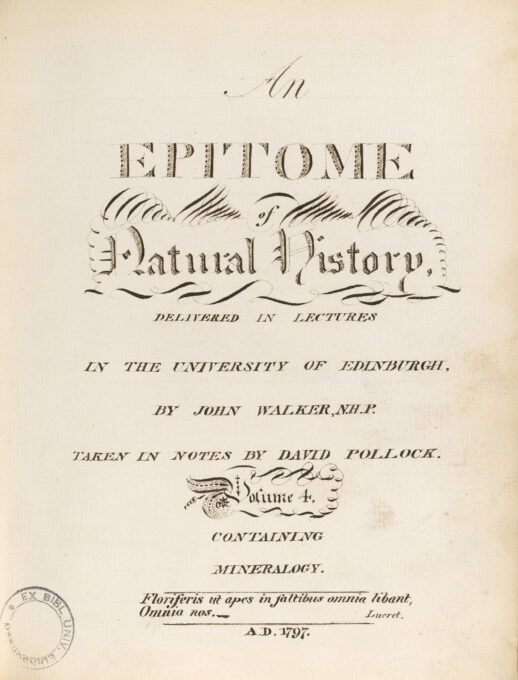
David Pollock’s lecture notes
For a glimpse into what 18th century Edinburgh students were learning, here are a few pages from David Pollock’s lecture notes on a natural history course. Studies of natural history ranged from mineralogy to zoology, with one section devoted to worms. Pollock decorates each section’s title cards.
|
||||||
| Object reference | Gen.703-12D |
|---|
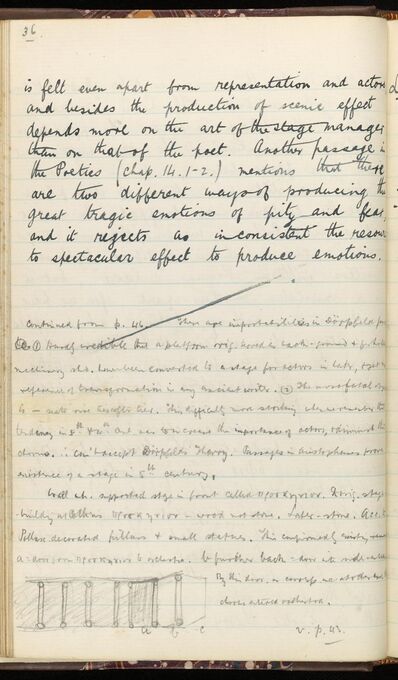
A.B. Taylor’s notebooks
A. B. Taylor was another Edinburgh student and prolific note-taker. However, his notebook itself tells us more about student life in Edinburgh: it is stamped inside the cover with a logo from Gardiner’s, a stationery store with locations at 66 South Bridge and 14 Teviot Place.
These are now Wild Yarrow and Armstrong’s Vintage respectively, as seen on the map below.
|
||||||
| Object reference | Gen 616 |
|---|

| Credit / Usage information | Illustration by Lydia Wiernik |
|---|
The 1838 riots, or the “Trial of the Students”
The following section references police brutality.
The University and College Union (UCU) strikes, ongoing at Edinburgh and across the UK since 2018, are nothing new to the University – students have protested and rioted since its inception. In 1838, a snowball fight on South Bridge turned into a riot against police and the institution, ending in a court hearing known as the “Trial of the Students.”
This bound compilation of riot ephemera is a pseudo-scrapbook containing illustrations, transcripts of student trials, margin notes, and newspaper clippings. The volume has a sense of naïve anarchy, penning a student revolution through Latin poems and Horace recitations. Utilizing the arts and literature is a tactic not dissimilar to modern revolutions; student zines, posters, and the occupation of Gordon Aikman Lecture Theatre in March 2022 are the modern voices of the 1838 riots.
Unfortunately, most of the content within this volume is anonymous or under a pen name, so little can be ascribed to any one student or group of students. What we do know is this was a collective effort through community solidarity.
Click the arrows to flip through the pages of illustrations and text. The media in this carousel depicts the trial, the riots themselves, and even student-illustrated political cartoons.
|
||||
| Object reference | RB.S.278 |
|---|
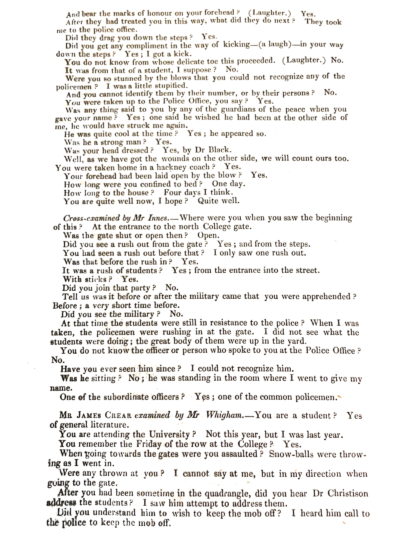
The transcript of the trial sheds some light on the situation, too. Unlike modern Edinburgh protests, the 1838 riots were not without violence.
|
||||
| Object reference | RB.S.278 |
|---|
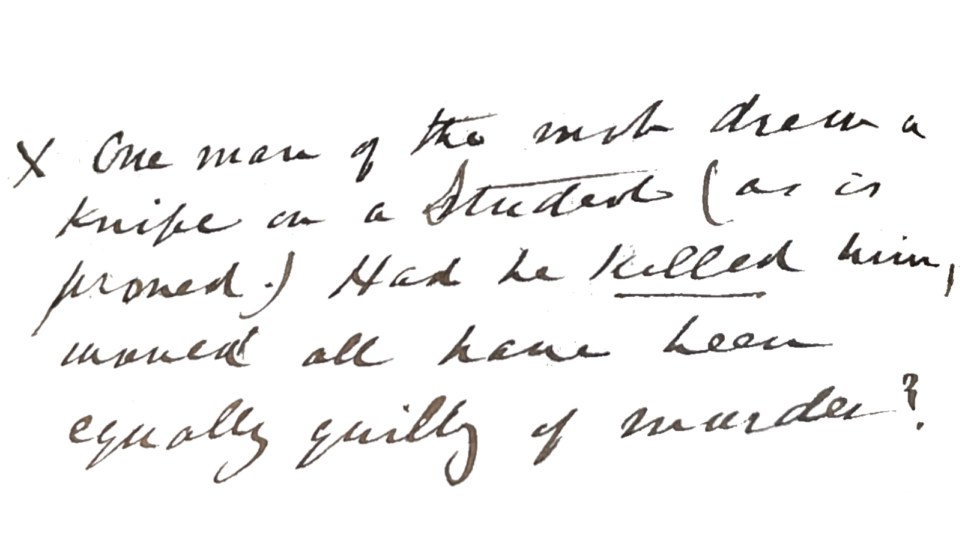
"One man of the riot drew a knife on a Student (as is proved.) Had he killed him, would all have been equally guilty of murder?"
|
||||
| Object reference | RB.S.278 |
|---|
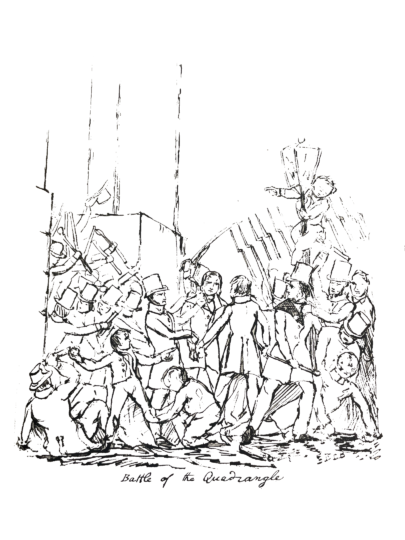
|
||||
| Object reference | RB.S.278 |
|---|

Exactly forty-nine years later, one of the Five Heroes revisits the riots, reflecting on student involvement and providing details surrounding and leading up to the events.
Compare the original text with this epilogue transcribed below – how similar are the sentiments? What has changed?
Edinburgh, 11th Jan. 1887
Forty nine years have now elapsed since the college snowball riot of 11th January 1838 took place and it was only yesterday a friend told me he had heard from the front line that day that I was one of the “Five Heroes” as the students’ journal delegates to call us. By what they call a coincidence, I have this day read the second [book] of the life of Sir Robert Charleson. He is the genius [...] following despondents’ account of the affair written long after the event. He first [recounts] a riot which took place in 1829, the occasion being a demand by the students to view the dead body of the [...] Barks which lay in the [...] room…the police were brought in…and alas the 40,000 of them saw the [...] carcass. Sir Robert then proceeds to say “the later [events of 1838] were much more alarming."

Students were vocal about the altercation, writing songs, poetry, and even riddles in a student publication called Snowdrop. Listen to current students Léna Lagrue, Xenia Lütjohann, and Maisie Graham read pieces from the 1838 issue of Snowdrop.
|
|
|

Textbook marginalia
Though we don’t know who annotated Tait’s Historical Sketch of the Dynamical Theory of Heat, seen in more detail in creation/progress, it is possible to eke out some of their study methods and note-taking systems; sections marked with “x” seem to indicate material that needs revising, and “xx” material that really needs revising.
They also note sections that Tait (or another lecturer) omitted in class.
|
||||||
| Object reference | RB.S.363 |
|---|
